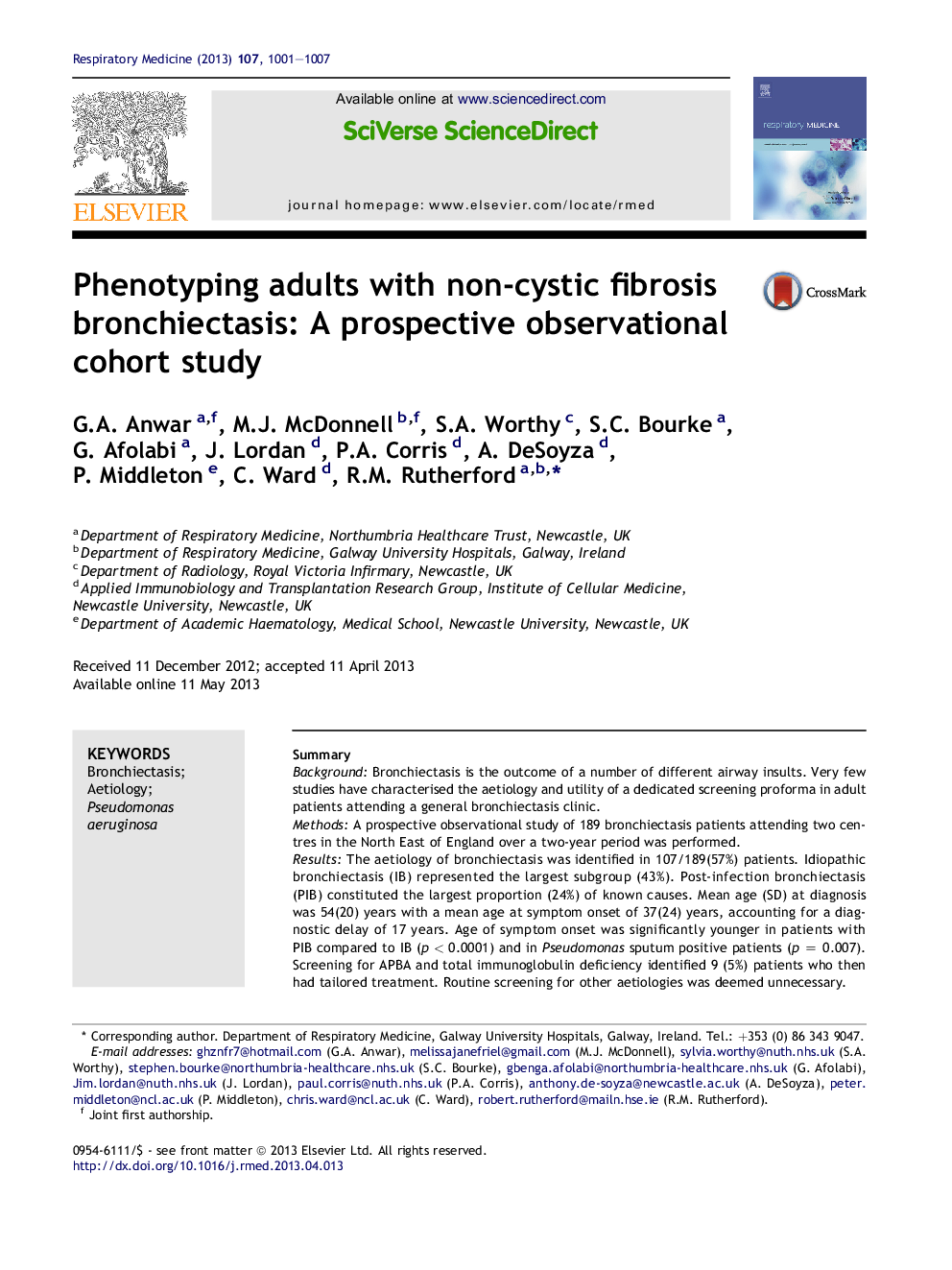| Article ID | Journal | Published Year | Pages | File Type |
|---|---|---|---|---|
| 6242149 | Respiratory Medicine | 2013 | 7 Pages |
SummaryBackgroundBronchiectasis is the outcome of a number of different airway insults. Very few studies have characterised the aetiology and utility of a dedicated screening proforma in adult patients attending a general bronchiectasis clinic.MethodsA prospective observational study of 189 bronchiectasis patients attending two centres in the North East of England over a two-year period was performed.ResultsThe aetiology of bronchiectasis was identified in 107/189(57%) patients. Idiopathic bronchiectasis (IB) represented the largest subgroup (43%). Post-infection bronchiectasis (PIB) constituted the largest proportion (24%) of known causes. Mean age (SD) at diagnosis was 54(20) years with a mean age at symptom onset of 37(24) years, accounting for a diagnostic delay of 17 years. Age of symptom onset was significantly younger in patients with PIB compared to IB (p < 0.0001) and in Pseudomonas sputum positive patients (p = 0.007). Screening for APBA and total immunoglobulin deficiency identified 9 (5%) patients who then had tailored treatment. Routine screening for other aetiologies was deemed unnecessary.ConclusionIB and PIB accounted for two thirds of cases of bronchiectasis in a general population. We recommend routine screening for ABPA and total immunoglobulin deficiency but not for other rarer aetiologies.
